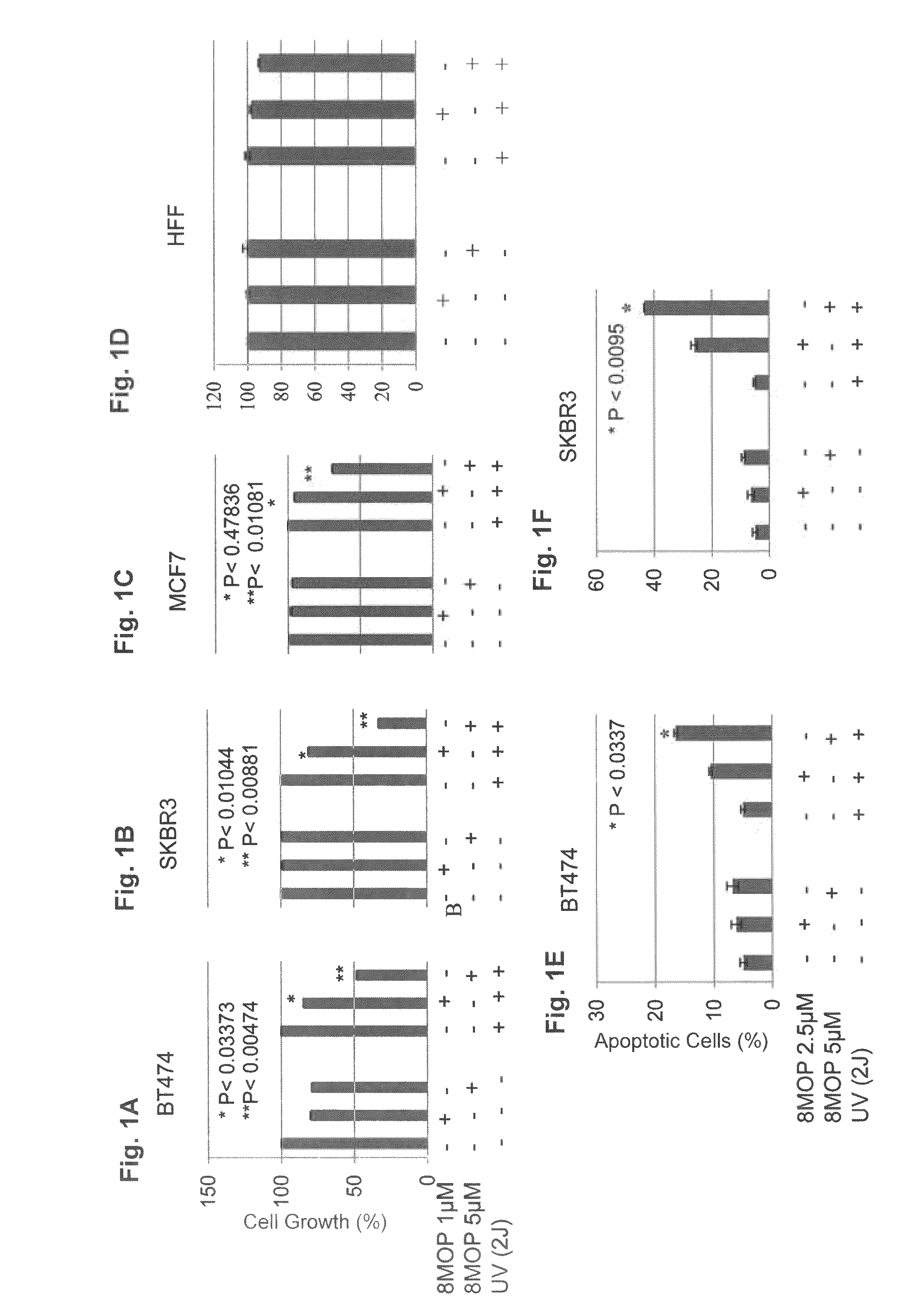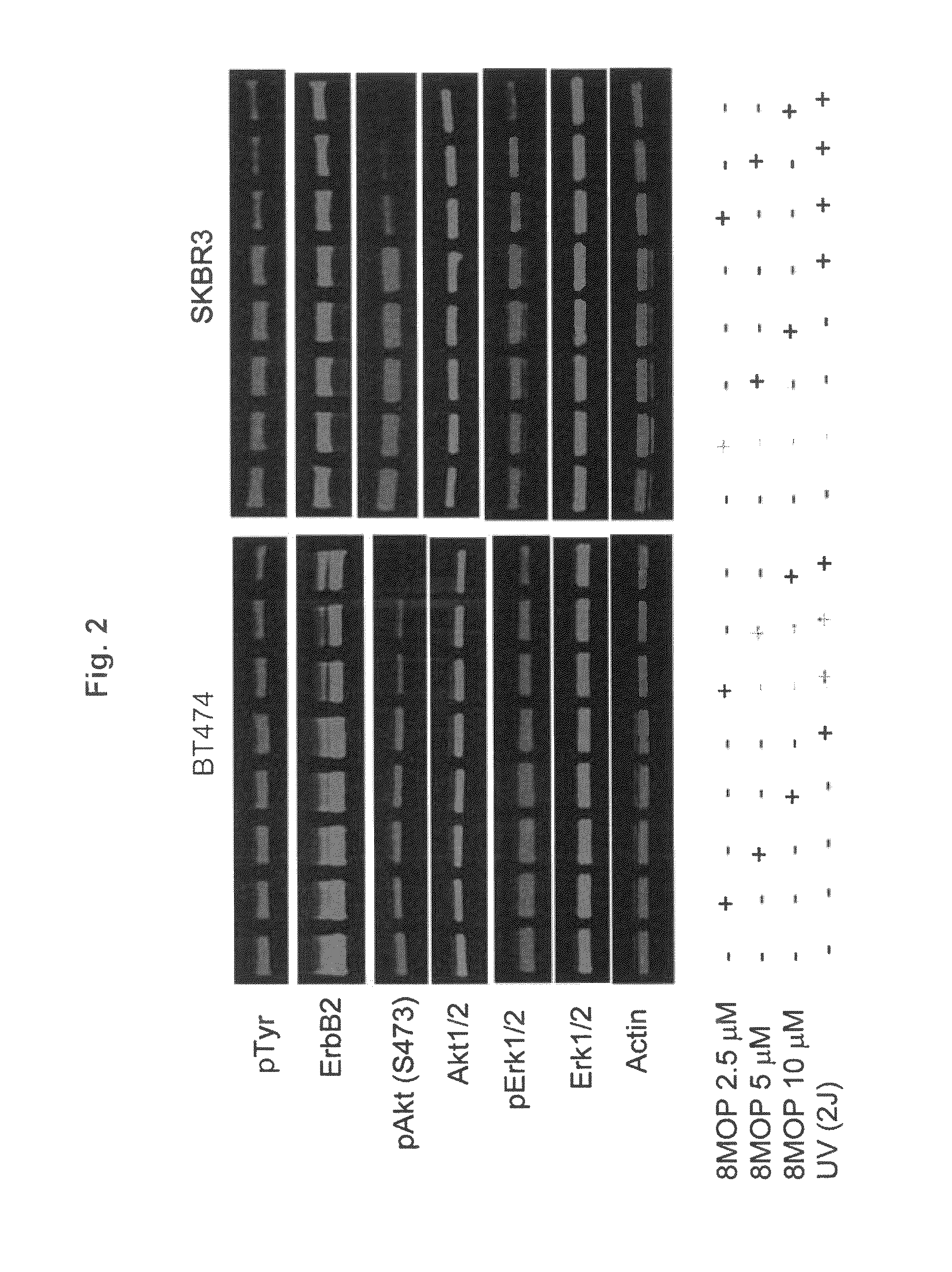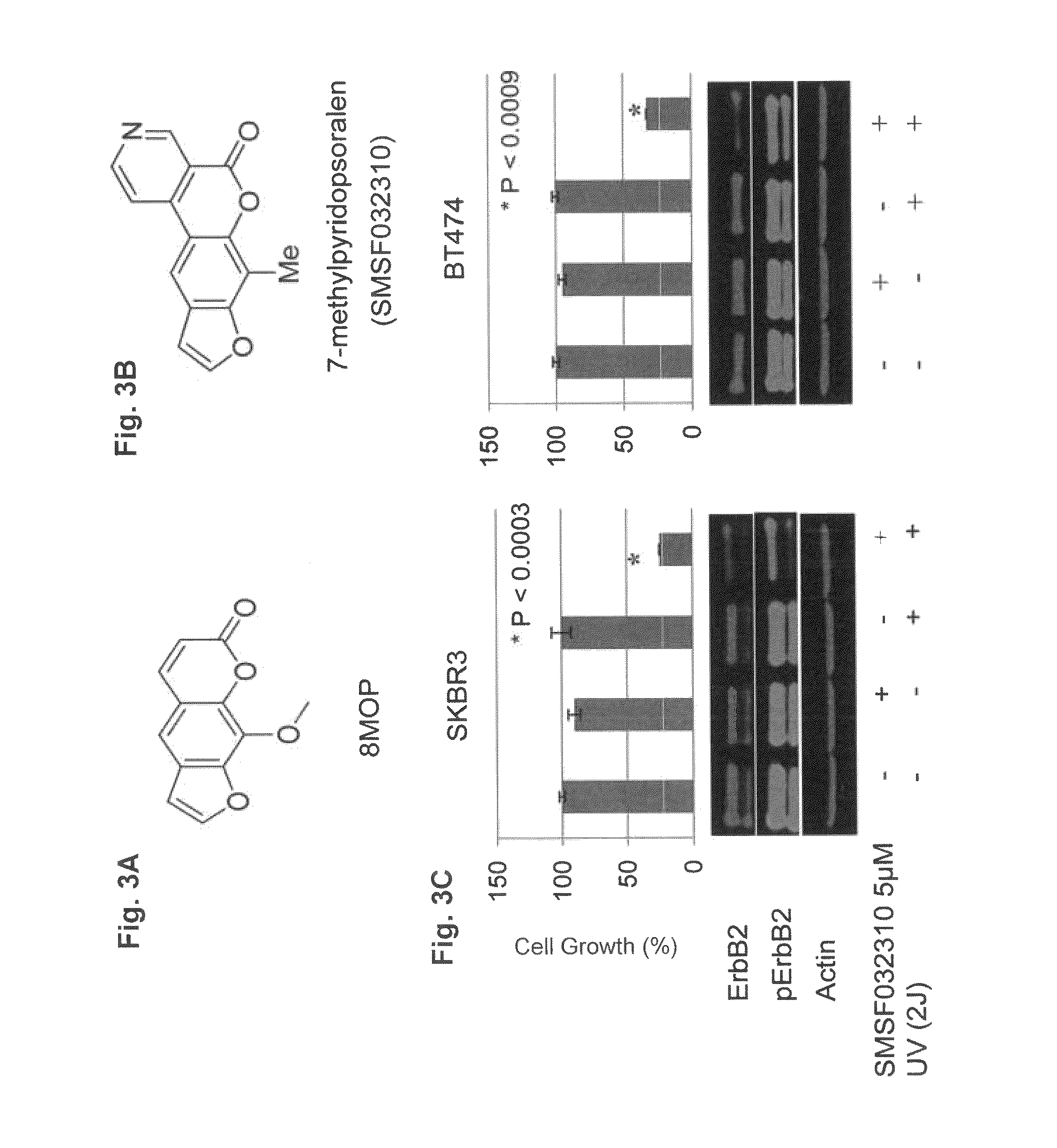Use of psoralen derivatives and combination therapy for treatment of cell proliferation disorders
a technology of psoralen and derivatives, applied in the field of cell proliferation disorders, can solve the problems of unsuitable 8-mop antiviral use, serious damage to otherwise healthy cells, and expected to be an even greater threat to our society and economy
- Summary
- Abstract
- Description
- Claims
- Application Information
AI Technical Summary
Benefits of technology
Problems solved by technology
Method used
Image
Examples
example 1
Inhibition of ErbB2 Signaling Triggers Apoptosis in PUVA-Treated ErbB2+ Breast Cancer Cells
[0123]The growth and viability of ErbB2+ breast cancer cell lines was significantly inhibited by PUVA therapy in a dose-dependent manner (FIGS. 1A and B). The loss of tumor cell viability appeared to be related to induction of apoptosis (FIGS. 1E and F). In contrast, PUVA therapy using identical treatment conditions (2.5 and 5 μM 8MOP) had relatively less effect on the growth and viability of MCF7 cells, a ErbB2 non-overexpressing human breast cancer cell line and a non-malignant human foreskin fibroblast cell line (HFF) (FIGS. 1C and D). It was therefore possible that photo-activated 8MOP might directly modulate ErbB2 activation and signaling. Seeking to demonstrate the effects of PUVA on ErbB2 signaling, the inventors showed that steady-state protein levels of the activated, phosphorylated form of ErbB2 were reduced in PUVA-treated ErbB2+ breast cancer cell lines in a dose-dependent manner (...
example 2
Psoralen can Directly Interact with the ErbB2 Catalytic Kinase Domain
[0124]A derivative of psoralen, 7-methylpyridopsoralen (FIG. 3A) which lacks the DNA binding motif was synthesized, making it unable to generate ICLs. Next the effects of this compound on ErbB2 signaling and tumor cell viability following UVA irradiation were determined. Upon photo-activation, 7-methylpyridopsoralen significantly inhibited the growth and viability of ErbB2+ breast cancer cells, which correlated with inhibition of phosphorylated and total ErbB2 protein expression (FIG. 3). These findings suggested that interruption of ErbB2 signaling in PUVA-treated tumor cells can be mediated by a mechanism(s) independent of ICL formation. Next is was sought to determine whether 8MOP can directly interact with the catalytic kinase domain of ErbB2. In this regard, BT474 cells were treated with biotinylated-8MOP and a pull-down experiment was performed (see Materials and Methods). Biotinylated-8MOP-protein complexes ...
example 3
Combination PUVA and Neratinib Treatment Leads to Enhanced Tumor Cell Killing
[0125]Targeted therapies tend to be more clinically efficacious in combination with other targeted or cytotoxic drugs. It was therefore evaluated a variety of targeted agents in combination with PUVA including PI3K inhibitors, HDAC inhibitors, PARP inhibitors, and other ErbB TKIs. The most promising combination was with neratinib (HKI-272), a small molecule, irreversible pan-ErbB (ErbB1 / EGFR; ErbB2; ErbB3; ErbB4) tyrosine kinase inhibitor that is currently in late phase clinical trials [19]. Treatment of ErbB2+ breast cancer cells with the combination of 8-MOP, UVA irradiation, and neratinib, each at sub-lethal doses when used alone, resulted in significantly enhanced inhibition of cell viability (FIG. 5). The effects of this combination on ErbB2, ErbB3 and downstream signaling pathways were further analyzed. Consistent with the inventors' recent findings [16], it was found that neratinib treatment alone re...
PUM
| Property | Measurement | Unit |
|---|---|---|
| volume | aaaaa | aaaaa |
| volume | aaaaa | aaaaa |
| volume | aaaaa | aaaaa |
Abstract
Description
Claims
Application Information
 Login to View More
Login to View More - R&D
- Intellectual Property
- Life Sciences
- Materials
- Tech Scout
- Unparalleled Data Quality
- Higher Quality Content
- 60% Fewer Hallucinations
Browse by: Latest US Patents, China's latest patents, Technical Efficacy Thesaurus, Application Domain, Technology Topic, Popular Technical Reports.
© 2025 PatSnap. All rights reserved.Legal|Privacy policy|Modern Slavery Act Transparency Statement|Sitemap|About US| Contact US: help@patsnap.com



